Looking to revolutionize your cooking? Discover incredible Tomato Hacks that unlock a world of flavor, from umami-rich enhancements to unique textures, transforming ordinary dishes into extraordinary culinary experiences.
This is more than a tomato; it’s a Swiss army knife. It’s got a bunch of different tools. It’s got water, sugar, acids, Umami, color, Jammy carbs, fibrous carbs, and of course Aroma. Let’s take a look at what a tomato can do.
If you’re not interested in reading everything here! Just check out The Best Tomato Sauce ever made at the bottom of this article…
Every technique discussed works for any kind of tomato. When using less-than-ideal tomatoes, a couple of recommended techniques can help improve the dish.
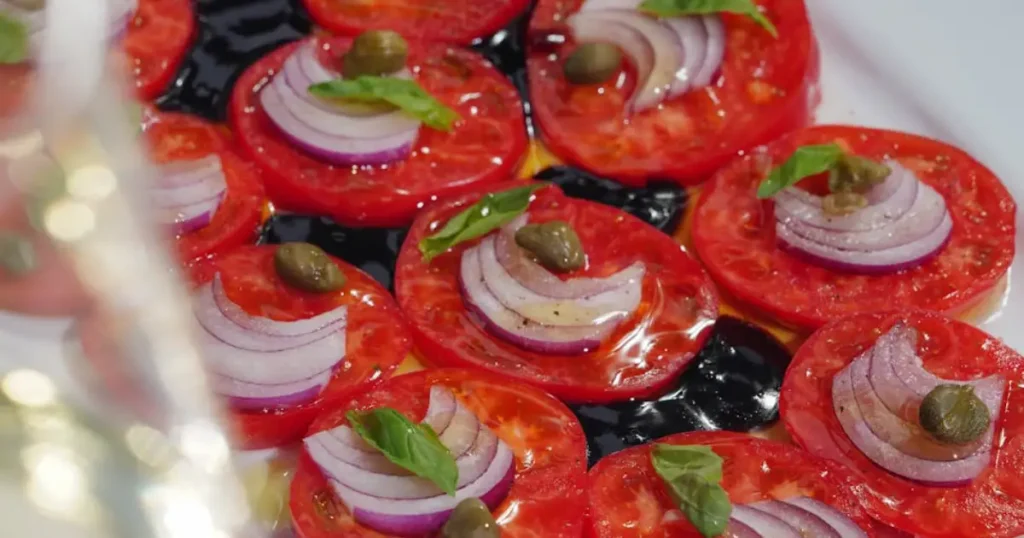
1. Charred Tomatoes: Intensify Flavor
Step one: Char them. Take them and put them into a ripping hot cast iron pan. Let them get blistered and charred. What’s going on is a little bit of evaporation of moisture. You’re basically concentrating a little bit of the tomatoey goodness that they have locked inside. Additionally, this process utilizes some of those sugars and amino acids to kickstart browning.
As a result, charred and blackened spots will develop, creating more depth of flavor, earthiness, and nuttiness—elements that subtly enhance a really well-seasoned ripe tomato.

You could stop right around here and already you’ve got like the perfect anti pasty tomato, like a little bit of salt, some olive oil, put that in a bowl and have people spoon it out. If you want something that can be a little bit more mushy, you can leave them in the pan.
What is recommended is to season them with salt. What will happen is you’ll get this really melty, very unique concentrated tomato experience that you wouldn’t otherwise, especially in the dead of winter in a place where tomatoes are not currently in season.
2. Pickled and Confit Tomatoes
You can also take baby tomatoes and you can do pickled whole tomatoes. They basically become almost like olives. You can take really any tomato you want and mix it with some vinegar and wine and make your own tomato vinegar. Another great medium is oil.
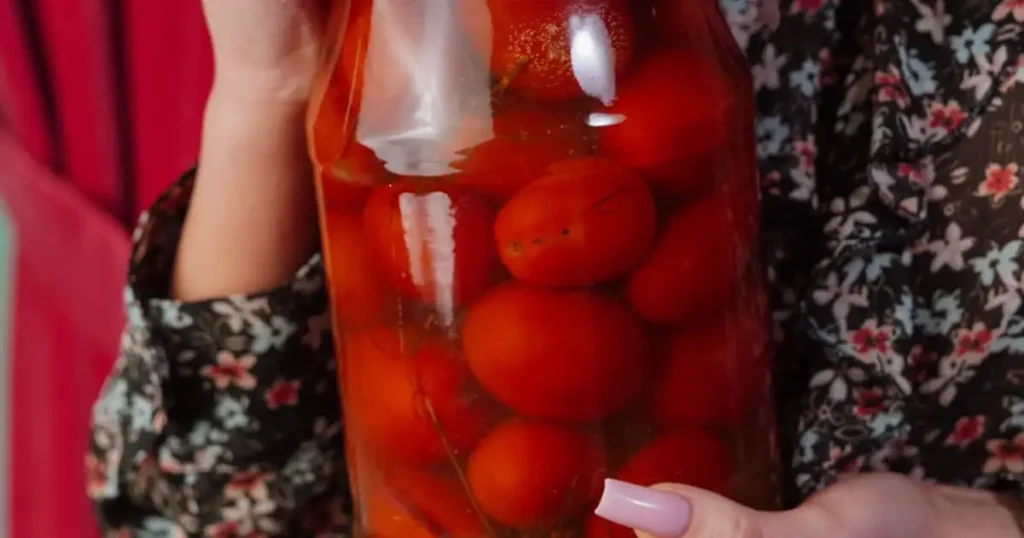
Throw some tomatoes in a pot of oil. Throw it on the back of the stove on the lowest possible heat for an hour. What you will get at the end of that hour is confi tomatoes which are melting and delicious and roasty and wonderful that you can use then as a flavor oil for whatever else you want to use.
3. Ketchup Pickled Tomatoes: Rescue Bland Slices
Let’s say that sliced tomatoes are desired on a sandwich, but you are cursed with less than ideal tomatoes. There is a get out of jail free card that you can pull if you so desire. This is the ketchup pickled tomato.
Start with four parts ketchup. So the idea is we want sweetness, savoriness, Umami, Aroma, all of those things built back into this disgraceful mess. One part soy sauce. The key here is soy sauce, fish sauce, shirodashi, the most Umami substance that you have in your kitchen straight in there, and then one part vinegar.

Whisk it together and then leave them in solitary confinement for like 30 minutes. When you pull these out of that marinade and put them onto a burger, it is a revelation.
4. Smoke Infusion
Another thing you can do is take advantage of the fact that they’re kind of flavor sponges. All of those pectin Jammy carbs that are helpful for thickening and creating tomato jerky are also really good at trapping uh scents trapping Aromas. Tomatoes Love Smoke.
You take a grill and you’re basically going to want to make sure that the tomatoes are away from the smoke source and able to capture all of the smoke slowly cuz the goal for that is not to char them but simply to perfume them.
Smoked tomato ketchup is one of favorite condiments to make at home. Smoked tomato soup is also enjoyable. Smoke turns out it’s good.

5. Tomato Water: A Versatile Base
Next up: tomato water. Tomatoes are like 95% water. If you’re getting a tomato from a grocery store in December, it’s like a million per water. If you zoomed in on a tomato with a microscope, you’d see something that looked kind of like a honeycomb.
There’s a bunch of cells with walls that are holding them together and inside each of those cells is a bunch of water.
To get that water out, there’s a lot of different approaches and each approach gives you different tools to work with. The simplest way that is liked is to chop them coarsely, salt them and beat them up a little bit. If you let chopped salted Tomatoes sit for like 15 20 minutes you’ll eventually get something like this water everywhere.
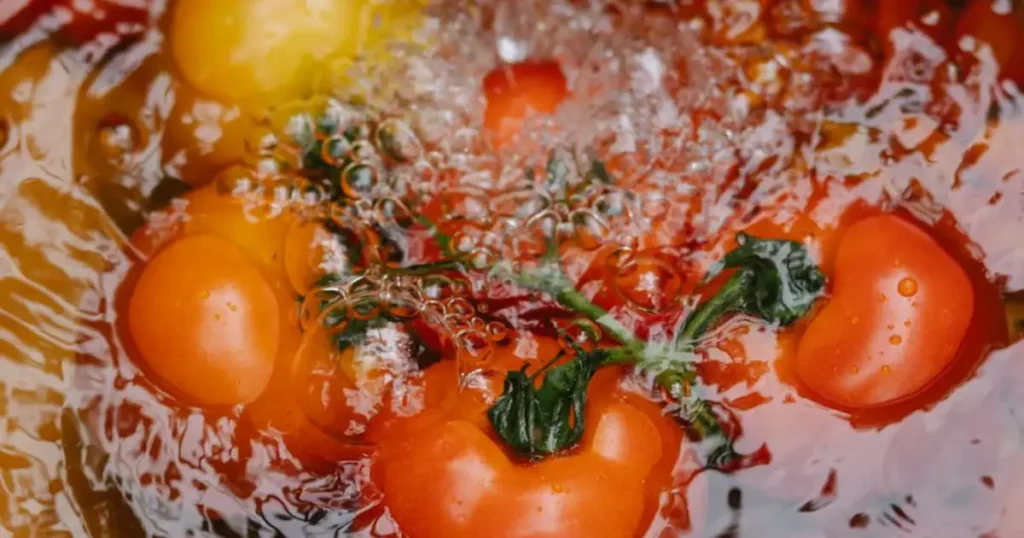
The way you turn it into a usable tool is to strain it. This is tomato water. Tomato water is awesome. It’s sour, it’s sweet, it’s got a lot of umami, it’s really really aromatic and smells like tomatoes and if you salted the tomatoes to get the water out it’s also salty.
This is like your Do-it all base for at least 15 things you can do with a tomato.
Culinary Applications of Tomato Water:
Tomato water is a versatile ingredient that can enhance various dishes. Use it as a salad dressing substitute, replacing half the vinegar in vinaigrettes, or to thin creamy dressings like ranch or Caesar. It serves as a broth base, allowing you to extract flavors from vegetables and bones for homemade broth.
You can also use it as a pickling or brining liquid, and it plays an essential role in ceviche, where you can replace half the citrus juice with it for a milder acidity.
Tomato water also makes an excellent poaching liquid, infusing dishes with umami, sweetness, and aroma.
As a marinade, it enhances browning power when whisked with an egg, making it ideal for applications like pretzels. The acidity cuts through richness in dishes, ensuring a balanced flavor. Use it like any egg wash, applying liberally before baking.
6. Tomato Bermonte: Elevate Butter-Based Dishes
Next up, tomato bermonte. There’s a bunch of different versions of this. I’m going to start with the simplest one. We’ll build from there. Basically you take chopped butter unsalted butter so you can have control of how much salt you want to add and melt it in a pot.
It’s time to replace that water with tomato water. Not only is the Tomato here giving you sweetness Umami really really nice tomato Aroma it’s also bringing a little bit of extra emulsifying power to the table than you would have with just the butter or water alone. You can keep this quite watery if you want to use it as a cooking medium.
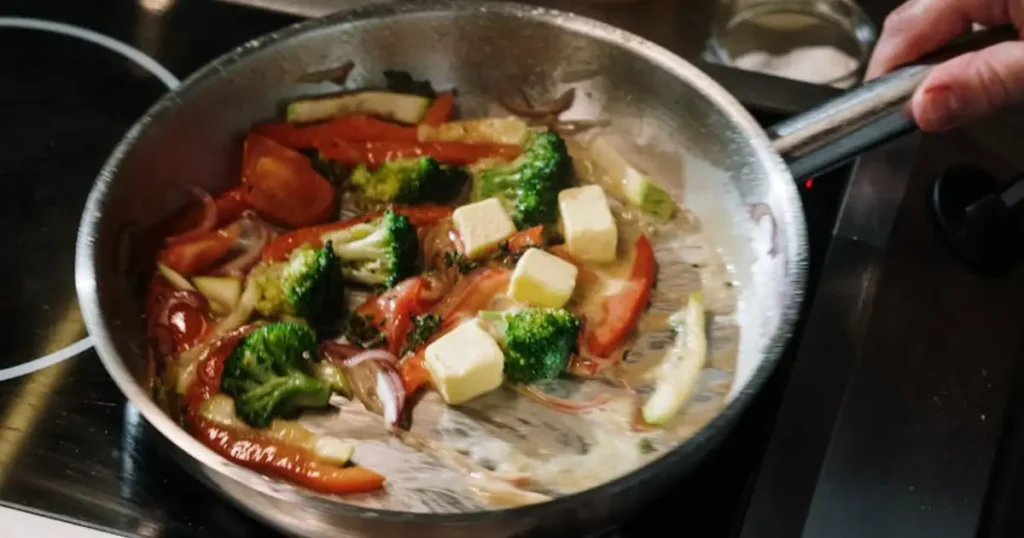
Butter poaching in tomato bermonte is what it feels like to be drunk with power it’s great. So at this point we’ve evaporated enough of the water out that the Emulsion has weakened and is on the verge of breaking.
If you want to use this let’s say for like a pasta sauce or for something to glaze a piece of roast chicken that just came out of the oven take it off the heat and you can add some cold butter back into the mix.
You can basically just swirl that in. This is also great if you want to use it for glazing vegetables. It’s great if you want to use it for cooking seafood or shellfish really slowly in a poaching liquid.
7. Tomato Puree Alternatives: Grated Tomatoes
The version of liquid tomatoes that most people are familiar with is puree tomatoes. You can absolutely take carted Tomatoes put them in a food processor or blender and give them a buzz. Different kinds of pectin and various types of fiber contribute to the loss of structure here, making it thick and somewhat pucky.
Tomato puree is good for stews and sauce bases and for making tomato fruit leather and things where a bunch of solids are helpful but there’s a lot of applications where that gritty mealy coarse texture of Tom puree isn’t actually what you want. A nice Middle Ground is to use a cheese grater. You take your tomato and you grate it like it’s parmesan.
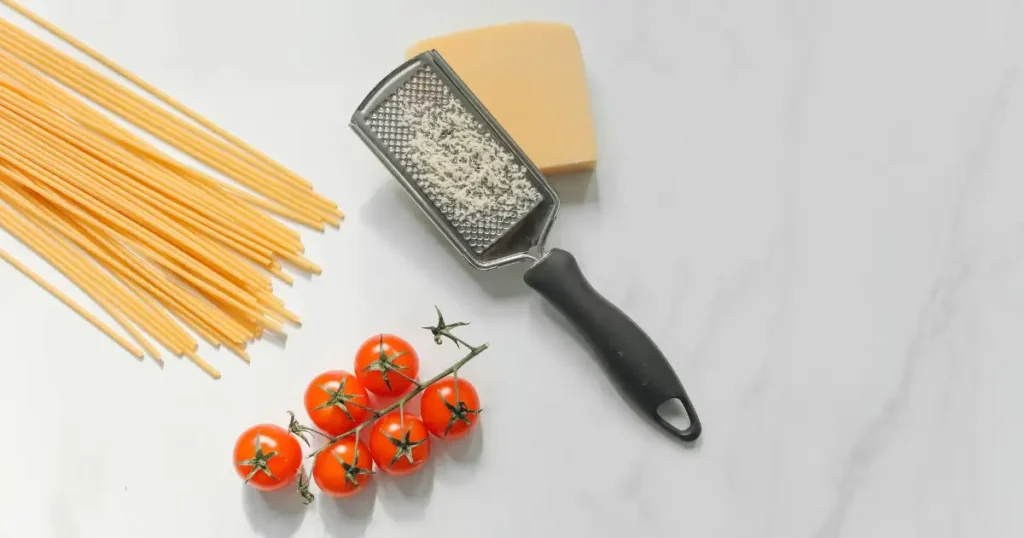
So after grating, we have really opened up the holes in that honeycomb to let water out quickly. If you salted this it would accelerate it even more and in just a couple minutes you would get a lot of really nice usable tomato water and the key is you haven’t completely destroyed all of the cells in the Tomato so it doesn’t become this homogeneous p puree.
You’re still able to effectively separate out all the solids from all the liquids which gives us more tools to work with.
8. Sweet Tomato Applications: Caramel
Tomato can enhance sweet applications, particularly in caramel recipes where tomato water adds complexity.
Traditional caramel starts with sugar and water, which balances sweetness with other flavors, creating a multi-dimensional taste experience. Incorporating tomato amplifies these flavors and introduces umami, making it versatile for various dishes, such as brushing on grilled meats or incorporating in sweets like chocolate cake or cookies.

Adding savory condiments like soy or fish sauce can transform it into a barbecue sauce. Additionally, using tomato water in beverages, like a non-alcoholic cocktail with bitters and soda, offers a refreshing drink option.
9. Tomato Skins: Unlock Aroma and Color
Tomato skins serve as a valuable yet often overlooked resource, containing aroma and color. Although the boiling water blanch and ice bath method is not ideal, it effectively removes the skins when equipment is limited.
Start by cutting an X on the opposite side of the stem, then immerse the tomato in boiling water for 1 to 2 minutes until the skin begins to loosen. Transfer the tomato to an ice bath to preserve its aroma and texture.
Once cooled, peel off the skin, which is rich in pectin and fiber, excellent for adding crispiness. To separate seeds and skin from water and pulp, a food mill is the most efficient method.
Use the resulting pulp and water as a classic tomato puree, ideal for making sofrito, sorbet, or homemade tomato paste.
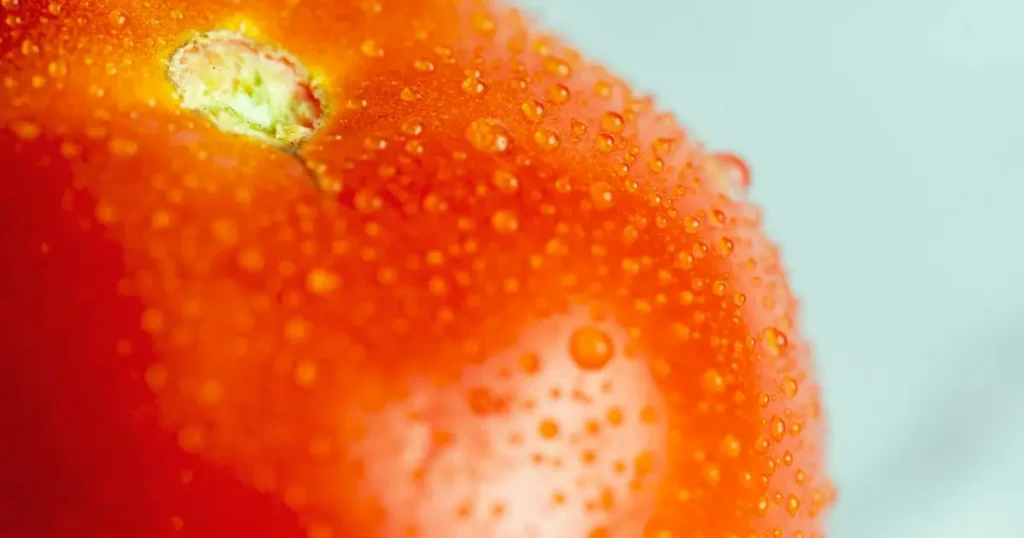
Dehydrated Tomato Skins:
Tomato skins are great for dehydrating. If you don’t have a dehydrator no worries you can do this in a home oven. You can also use a tabletop convection oven for this, and an air fryer is one of the best applications for it. After you dehydrate the tomato skins for just an hour or two, you get a tomato skin chip that you can eat like a chip.
It’s got a really lovely delicate crispy texture very similar to like Nori if you have like seaweed chips and you can put this on a sandwich. Every sandwich in the United States and Beyond is better with chips inside of it. You can also grind them up and use them as a way to give some more structure and dimension to like a fried chicken breadcrumb coating.
These are great in a salad. These are also great if they’re fully ground up into a tomato powder which is what we’re going to look at next basically you’re going to start with dehydrated tomatoes and a spice grinder load them in put the top on and grind. So after a couple of whirls we’re starting to get to a powder but you can see that there’s still a couple of pieces that are kind of floating so what will do is add a little pinch of salt a pinch of salt in that grinder will help mash the Tomato chips up even more so that they have a chance to hit the blades of the grinder.
10. Tomato Powder: A Kitchen Essential
Tomato powder this is one of the most useful versatile things that you can have in your kitchen. French fries are a perfect application for tomato powder. Hot crispy potato some tomato powder or tomato salt and then toss. You have tomato seasoned potatoes that won’t go soggy which makes this ideal for if you wanted to make tomato pasta or steak sauce or use them in place of Bonito flakes in making Dashi uh you can use tomato skins tomato powder and kelp and have a delicious deeply satisfying Rich Umami broth base.
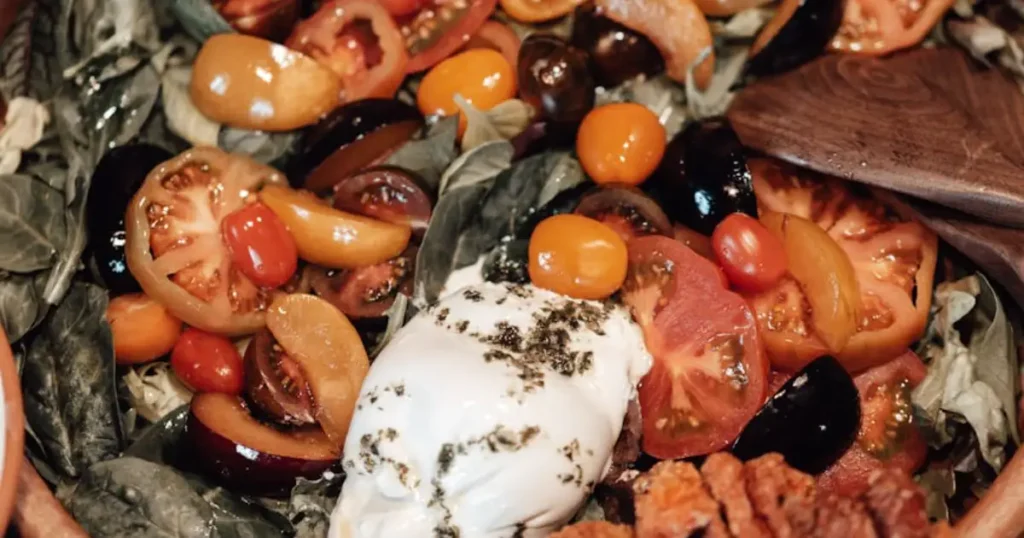
11. Dehydrated Tomato Slices: Versatile Textures
Tomato skins and seeds can be dehydrated, along with tomato slices, for various uses. A one-hour dehydrated tomato slice is perfect for sandwiches, while a couple of hours in the dehydrator creates a jammy tomato similar to the trendy jammy egg.
This jammy texture is ideal for pureeing into a creamy tomato sauce or aioli when time is limited. It serves as a great base for dishes like tomato pie and can be dressed with olive oil and salt for a delicious tomato carpaccio.

Additionally, jammy tomatoes are excellent for thickening sauces, enhancing soups, or making a tomato cream for pizza. For a more decadent dish, they can be folded into risotto.
Tomato skins with some meat can be dehydrated into a form of tomato jerky, and if dehydrated thoroughly, they can transform into a tomato cracker rather than just a chip.
12. Tomato Jam: A Sweet and Savory Delight
Jammy has been said enough to describe this tomato, so some Jam should be made. To make tomato jam. Tomatoes are miraculous because they can either go sweet or savory depending on what’s around them in like a typical jam with strawberries. You can incorporate some diced partially dehydrated Jammy tomatoes to basically donate a lot more pectin to the mix and make the end result feel even richer even stickier even jamier than it would otherwise.
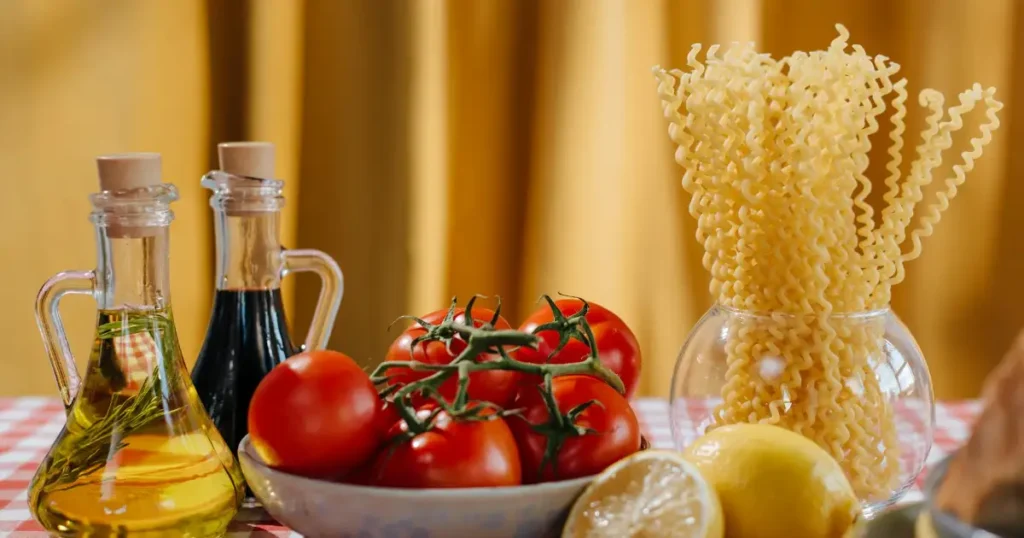
Start with diced fruit strawberries about 1: one and uh the dehydrated Jammy tomato some sugar to whatever your desired level is a little bit of lemon juice. Less Lemon is typically used for this kind of application and then a little bit of tomato water. The tomatoes what they’re bring to the table is depth color tanginess savoriness and thickness from the pon. These have been cooking for about 45 minutes witness the thickness.
13. Tomato Stem Vinegar: An Aromatic Twist
It is recommended using every possible part of the Tomato because it all has something to offer including the stems. Stick them in a bottle of white distilled vinegar. Leave them in there for a couple weeks strain it out and you’ll get a tomato stem vinegar that kind of brings a bright green grassy punch to anything that you want to put it on.
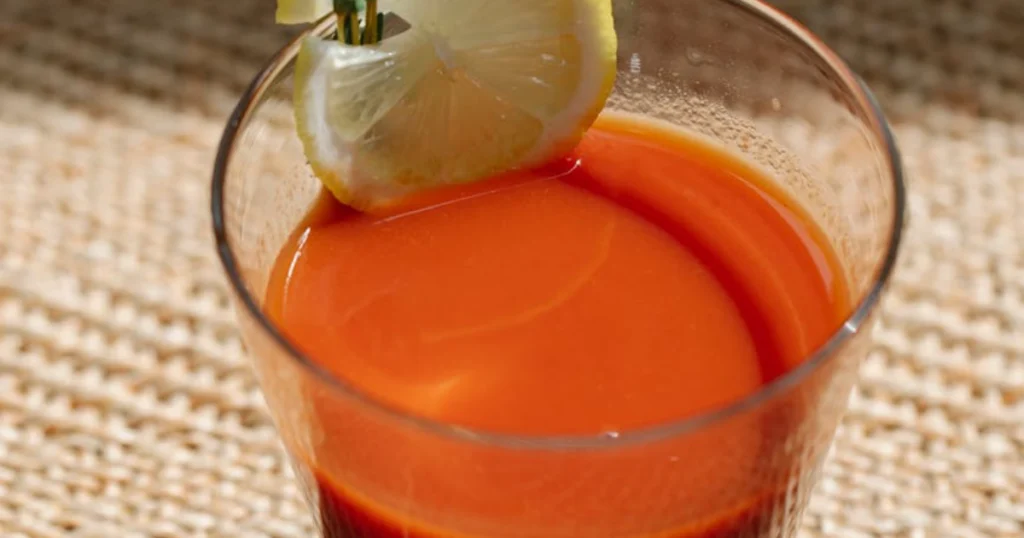
It also actually works really well with like a neutral Spirit like vodka put it in salad dressings.
Another thing that you can do with these stems dry these tomato stems so that they’re brittle and cracky and grind them into a powder. It’ll look like drugs but it’ll taste like a garden.
These tomato hacks provide a multitude of ways to broaden culinary horizons. Instead of just seeing that thing that you turn into pasta sauce, see a thickener, a flavor sponge, a source of color, a source of acid, a source of sweetness, and a way to make stuff turn golden brown in the oven. That way of thinking about ingredients is how you really broaden your horizons in the kitchen. By embracing these techniques, anyone can unlock the full potential of this versatile ingredient.